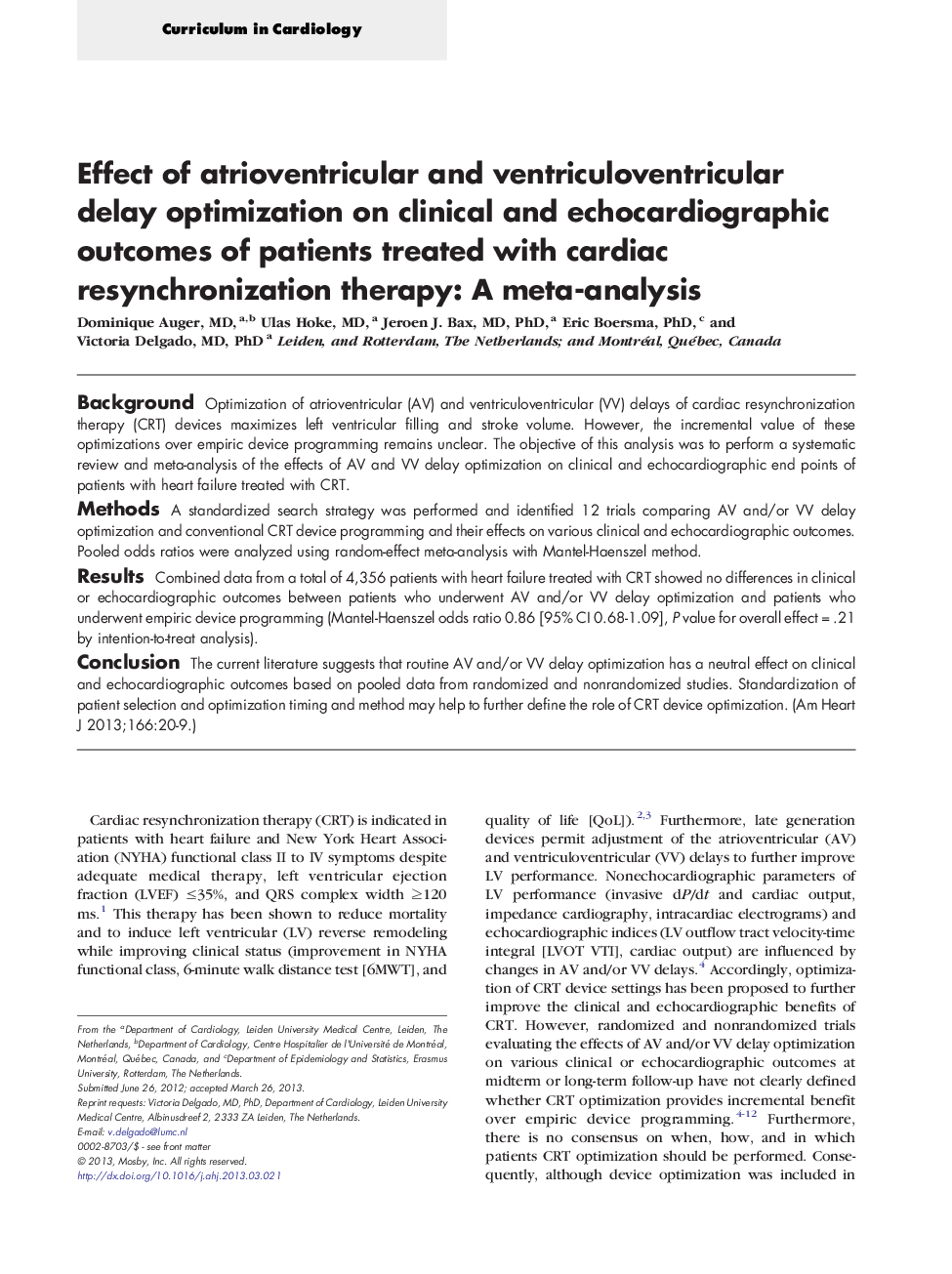| Article ID | Journal | Published Year | Pages | File Type |
|---|---|---|---|---|
| 2848815 | American Heart Journal | 2013 | 10 Pages |
BackgroundOptimization of atrioventricular (AV) and ventriculoventricular (VV) delays of cardiac resynchronization therapy (CRT) devices maximizes left ventricular filling and stroke volume. However, the incremental value of these optimizations over empiric device programming remains unclear. The objective of this analysis was to perform a systematic review and meta-analysis of the effects of AV and VV delay optimization on clinical and echocardiographic end points of patients with heart failure treated with CRT.MethodsA standardized search strategy was performed and identified 12 trials comparing AV and/or VV delay optimization and conventional CRT device programming and their effects on various clinical and echocardiographic outcomes. Pooled odds ratios were analyzed using random-effect meta-analysis with Mantel-Haenszel method.ResultsCombined data from a total of 4,356 patients with heart failure treated with CRT showed no differences in clinical or echocardiographic outcomes between patients who underwent AV and/or VV delay optimization and patients who underwent empiric device programming (Mantel-Haenszel odds ratio 0.86 [95% CI 0.68-1.09], P value for overall effect = .21 by intention-to-treat analysis).ConclusionThe current literature suggests that routine AV and/or VV delay optimization has a neutral effect on clinical and echocardiographic outcomes based on pooled data from randomized and nonrandomized studies. Standardization of patient selection and optimization timing and method may help to further define the role of CRT device optimization.
